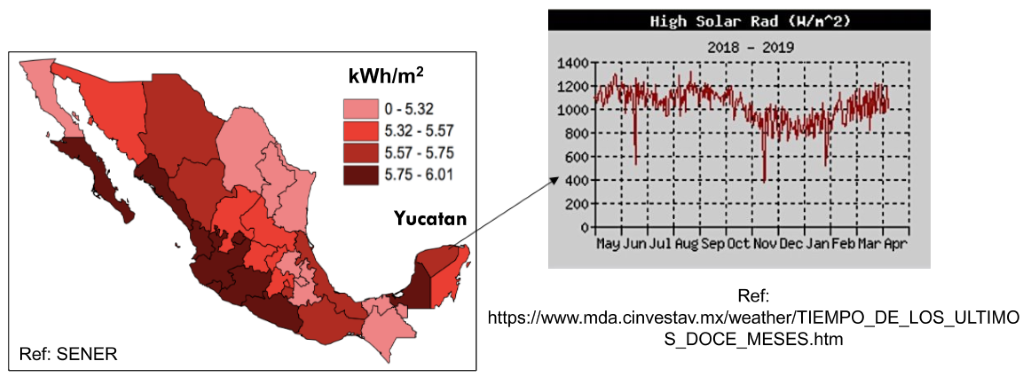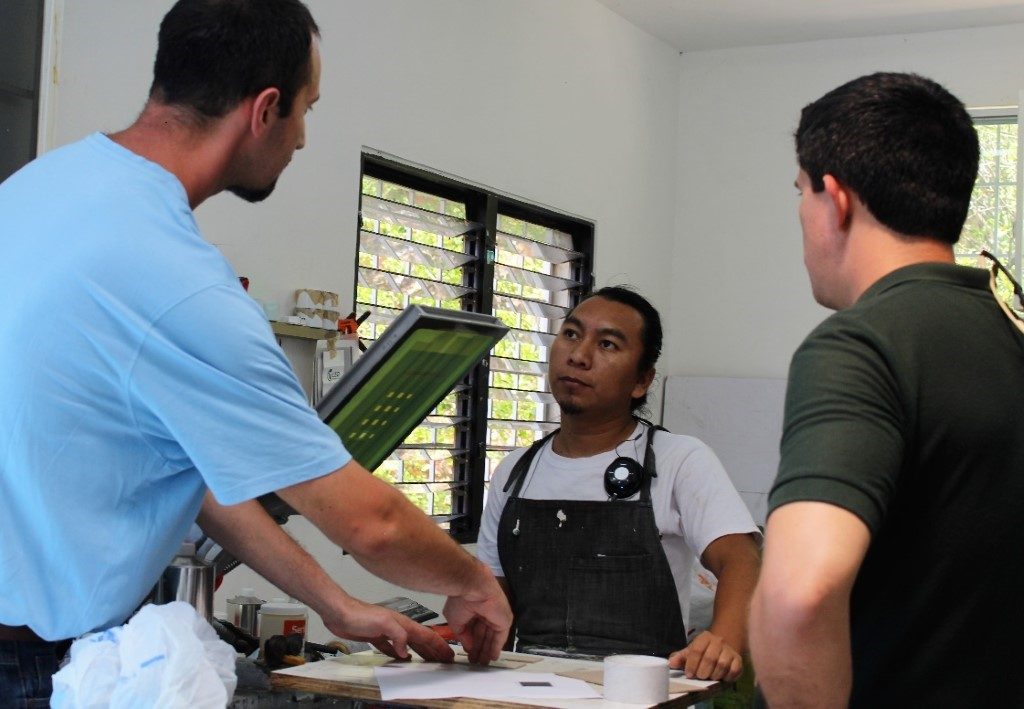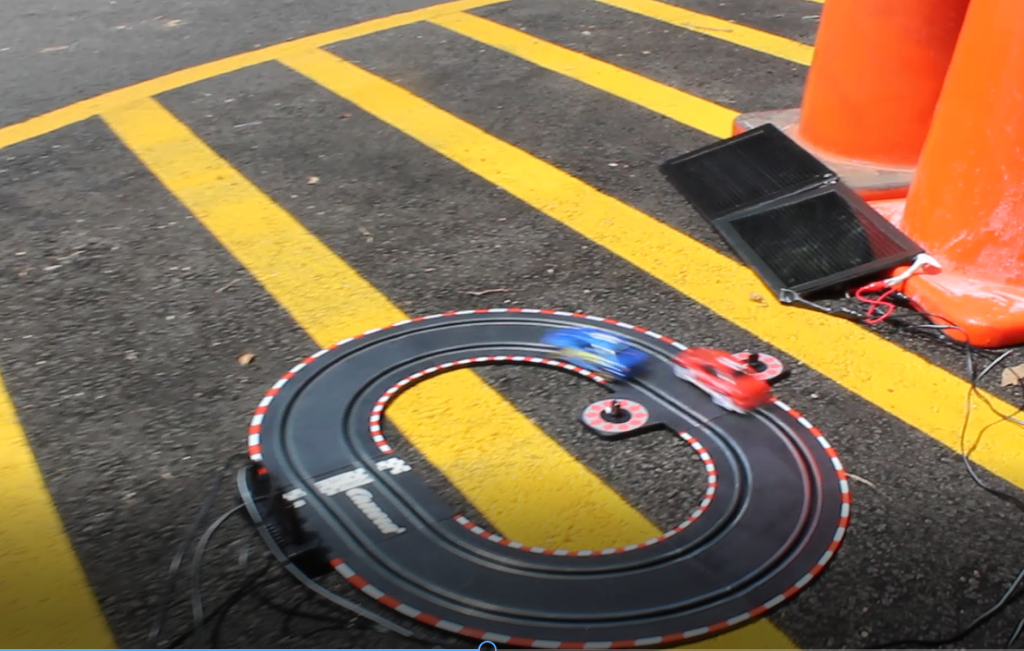Blog by Simone Meroni
In 2017, our PV group, alongside CINVESTAV, was awarded a Newton Fund grant to assess the viability of using the existing textile industry infrastructure in Merida to manufacture low-cost screen-printed photovoltaic modules. So last month, our PV team were back in Mexico to continue work with collaborators, and to undertake some outreach work with local schools. Simone Meroni tells us all about it…
Yucatan is a Mexican state, surrounded by the Caribbean Sea, where the Mayan civilization flourished. Here, the sun shines all year. The winter, as most Europeans known, never makes an appearance, making the area ideal for the production of solar energy (and for sun lovers). The area is not heavily industrialised, and there are a number of small and medium enterprises. CINVESTAV, one of the most important research centres of the county is located in Mérida, the capital of Yucatan.

The city of Uxmal
SPECIFIC has a very fruitful collaboration with CINVESTAV and Professor Gerko Oskam’s group, working on PV and manufacturing. The collaboration started in 2016 when Dr. Renán Escalante visited Swansea as a PhD student and spent three months in our laboratories. The relationship grew stronger thanks to a Santander mobility grant, which allowed researchers from Swansea to visit Mérida in the following months, including Dr. Jenny Baker, Dr. Amrita Yasin and myself.

Irradiance in Mexico

Screen-printing of carbon perovskite solar cells in a local company. From left to right, Simone, Maurizio and Renán
SPECIFIC has the capability to fabricate carbon perovskite solar cells based on the low-cost screen-printing process. So during this Newton Fund project, I drew on this experience and spent my time in the CINVESTAV labs researching the production feasibility of these cells in Mexico. The architecture is considered the cheapest for perovskite solar cells, because it is based on low-cost materials and low-cost manufacture processes. Furthermore, this architecture was reported to be the most stable in the perovskite solar cell field, making this kind of device the closest to achieve market penetration.

Three 5X5 minimodules fabricated in Mérida
Thanks to a Newton fund contribution, the manufacture of the single cells was extended to module design in both CINVESTAV and a local screen-printing company. Because of the simple manufacture process, devices with comparable performance to the devices produced in Swansea were successfully prepared.

Toy car track powered by perovskite solar modules in Mexico. Manufactured in Swansea.
Within the Newton funding, two workshops were delivered: one in October 2018 and more recently, one in September 2019. Around 200 teenagers attended the second workshop, a natural success after amazing outcomes of the first workshop.
The second workshop gave us the chance to show the large area modules that I fabricated in Swansea, 224cm2 active area modules generating around 1.5 W under 1 sun illumination. The design and optimisation are the outcome of the PhD project that I completed under supervision of Prof. Trystan Watson. With these numbers, a toy car track requiring 14V and 0.3A could be powered by two modules and enable the children to play.
I would like to acknowledge the Newton funding for making this project possible. I thank the group in Mexico, Prof. Gerko Oskam, Dr. Dena Pourjafari, Dr. Renán Escalante and Dr. Diecenia Peralta. A big thank you to Dr. Adrian Walters and Sara Walters for the administrative support and, last but not least, a big thank to the group in Swansea, Prof. Trystan Watson and Dr. Jenny Baker, for the support in the project.
